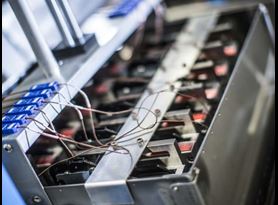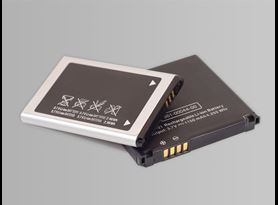Understanding Potential Changes to UL 1642
UL 1642 is a standard that covers both rechargeable and non-rechargeable lithium-ion or lithium metal cells and batteries. A battery is any configuration of two or more cells connected by a circuit. Currently, there is no additional testing done under UL 1642 for cells that contain sulfide-based solid electrolytes, however, an engineer at UL has created a new proposal that would add further requirements when a cell contains a sulfide-based electrolyte. Because Element has many customers who test sulfide solid electrolyte cells with us, our experts have evaluated a draft of the proposal and compiled some information about how it may impact the testing process and what aspects of the proposal are still unclear or subject to change.
The new proposal seeks to address the potential danger to consumers posed by hydrogen sulfide, a toxic gas, which is released when the sulfide solid electrolyte encounters moisture in the air. According to the proposal, "The potential emission of H2S (hydrogen sulfide) from solid-state lithium batteries with sulfide electrolyte is a unique, yet hazardous characteristic, so we are trying to address this by the mandate of gas concentration monitoring." The proposal would require those doing abuse testing on batteries to also determine the concentration of toxic emissions. It is not yet entirely clear how measurements of these emissions will be collected to produce meaningful and consistent data.
When this proposal has been finalized, manufacturers who need to test cells with sulfide-based solid electrolytes will see some changes to their testing procedures. These changes will include abuse testing in a container that has one or more sensors to detect the levels of hydrogen sulfide present. Afterward, the level of hydrogen sulfide will be examined to determine if it presents a safety risk.
These changes (summarized below) would hold sulfide solid electrolyte cells to a higher standard than other electrolyte systems. Although the goal of this proposal is reasonable and supports consumer safety, it is unclear why sulfide-based electrolytes have been singled out for this more rigorous testing. Cells that use other electrolytes also present certain safety risks, but the additional testing required for sulfide-based electrolyte systems would make them more costly and time-consuming to test.
- In the new proposal sulfide-based solid electrolytes would be required to meet a capacity check.
- Cells that have a sulfide-based solid electrolyte would be subjected to a discharge-charge cycle after each test per B3.1.
- Sulfide-based solid electrolytes would be required to undergo a force discharge test, which is currently only required for cells used in EVs and is not required for other lithium cells.
- The temperature of the heating test would be raised from 130°C to 180°C and the test duration would increase from 10 minutes to 60 minutes.
Element’s battery test experts will continue to monitor the status of this proposal and provide information on changes to battery testing that may impact our customers. For more information about our battery testing services, visit our battery testing web page or contact us.
Find related Resources
Learn more

Battery Testing Services
Element stays up-to-date with the latest industry trends, including automotive, medical, and technology. We offer comprehensive battery testing services for a wide variety of batteries and cells.

Lithium Battery Testing & Certification
Element supports the customized safety, failure analysis, and R&S testing of lithium batteries for a variety of industries, from power tools to medical devices.

Article: EV Battery Testing From Cell to Module to Pack
Battery components of all sizes require specialized testing. Learn more about the various testing requirements for cells, modules and packs.

On-Demand Webinar: Beyond Battery Cycling
Presented in partnership with SAE International, this webinar covers the latest testing requirements, procedures, and best practices in automotive battery testing.

